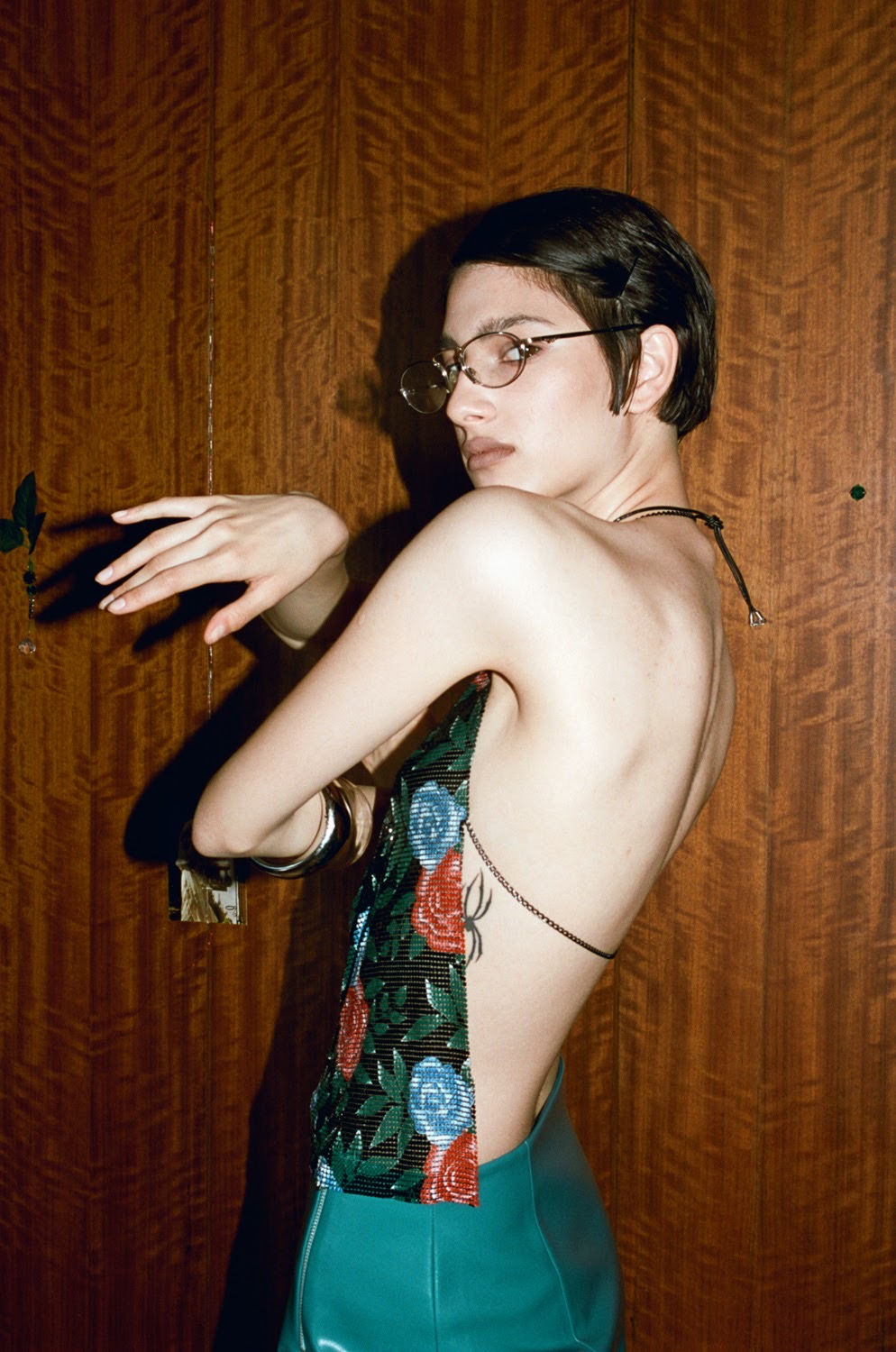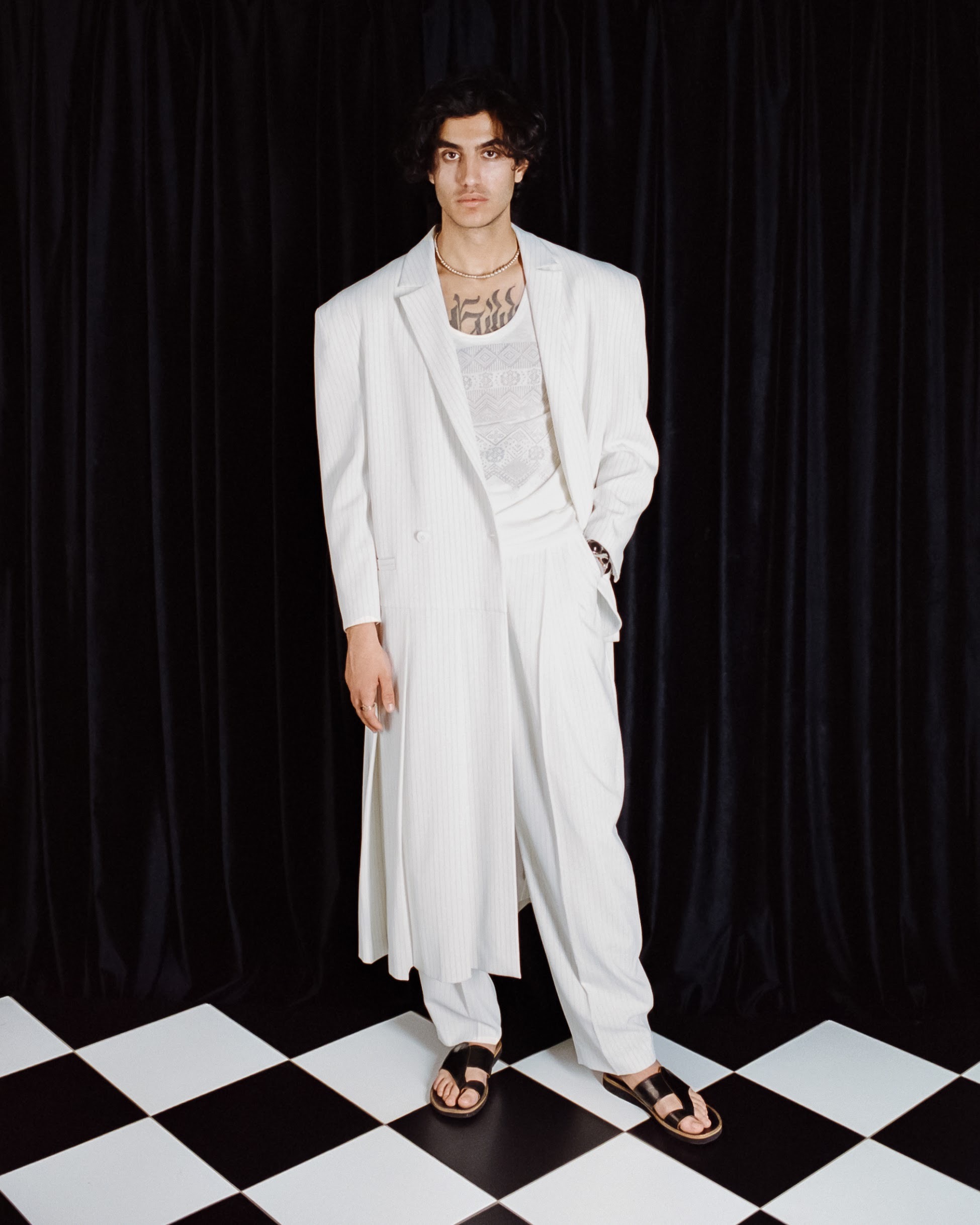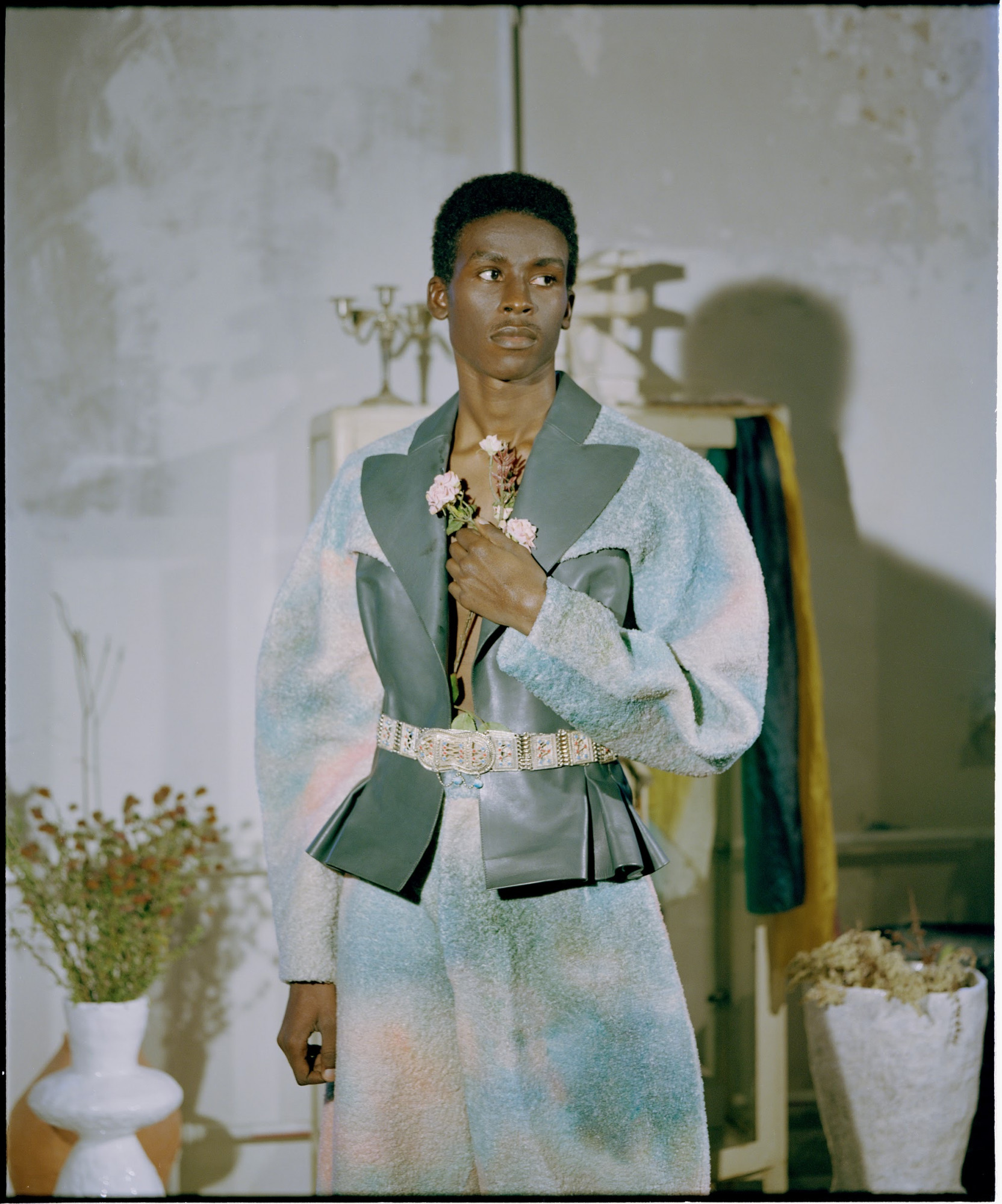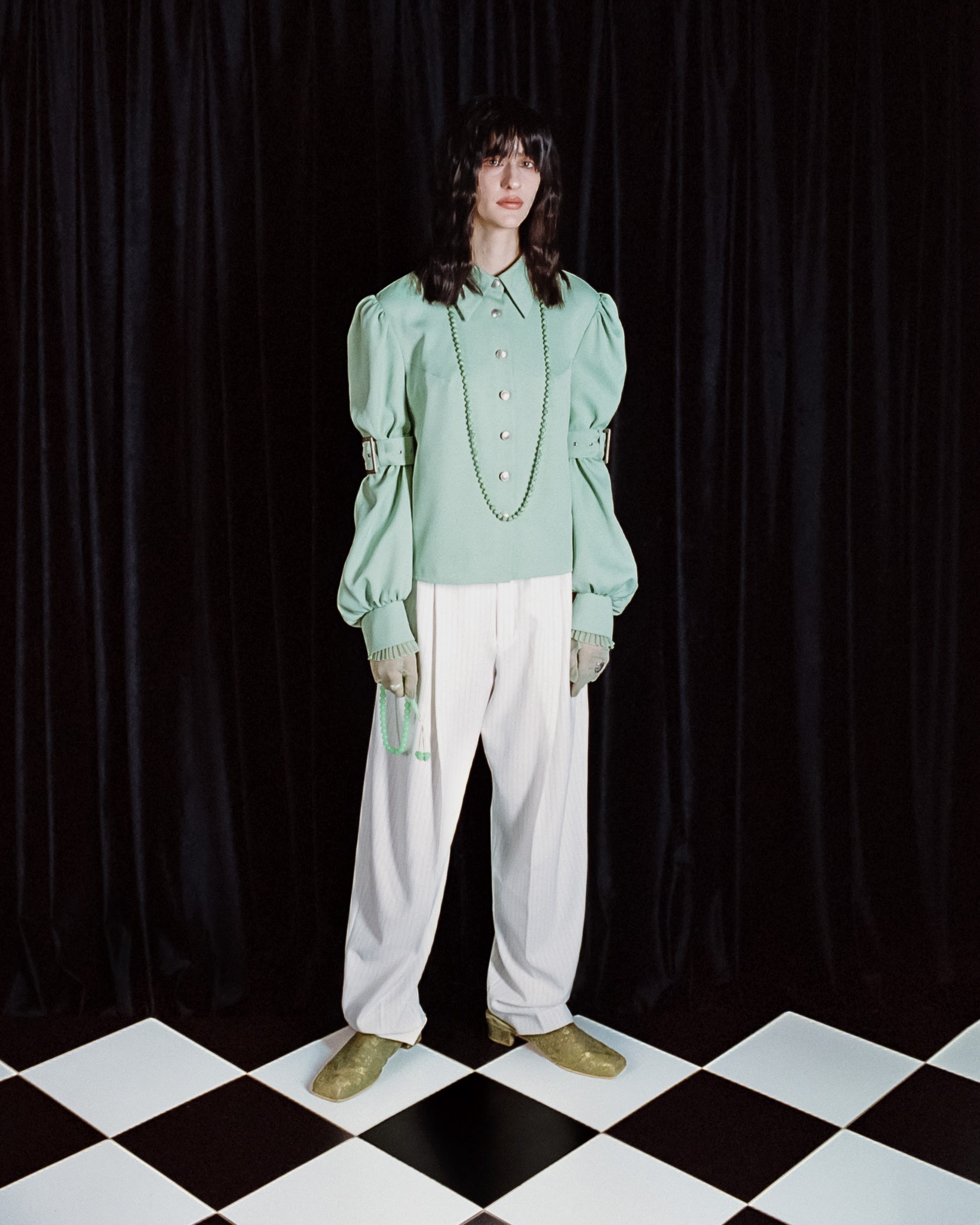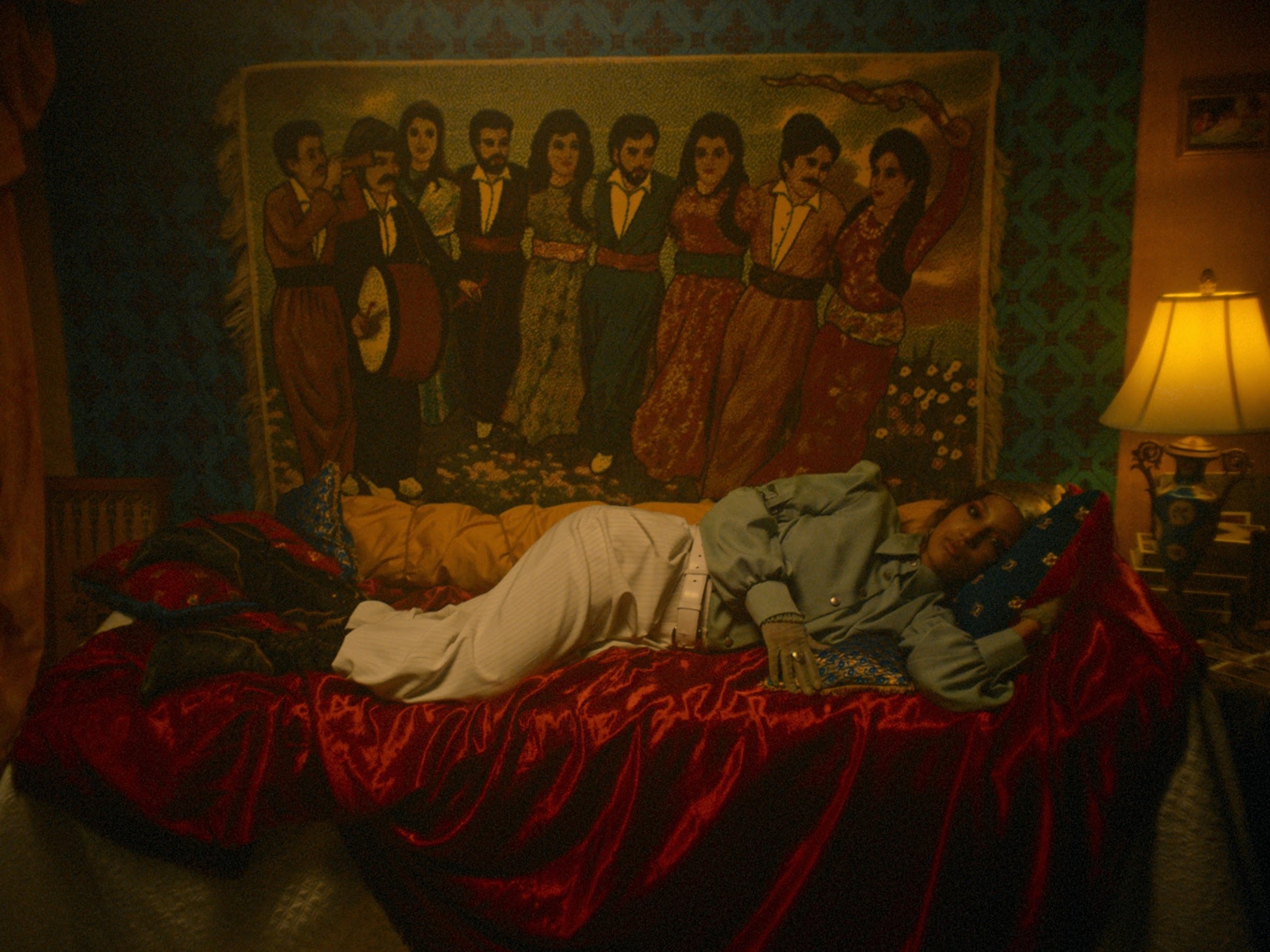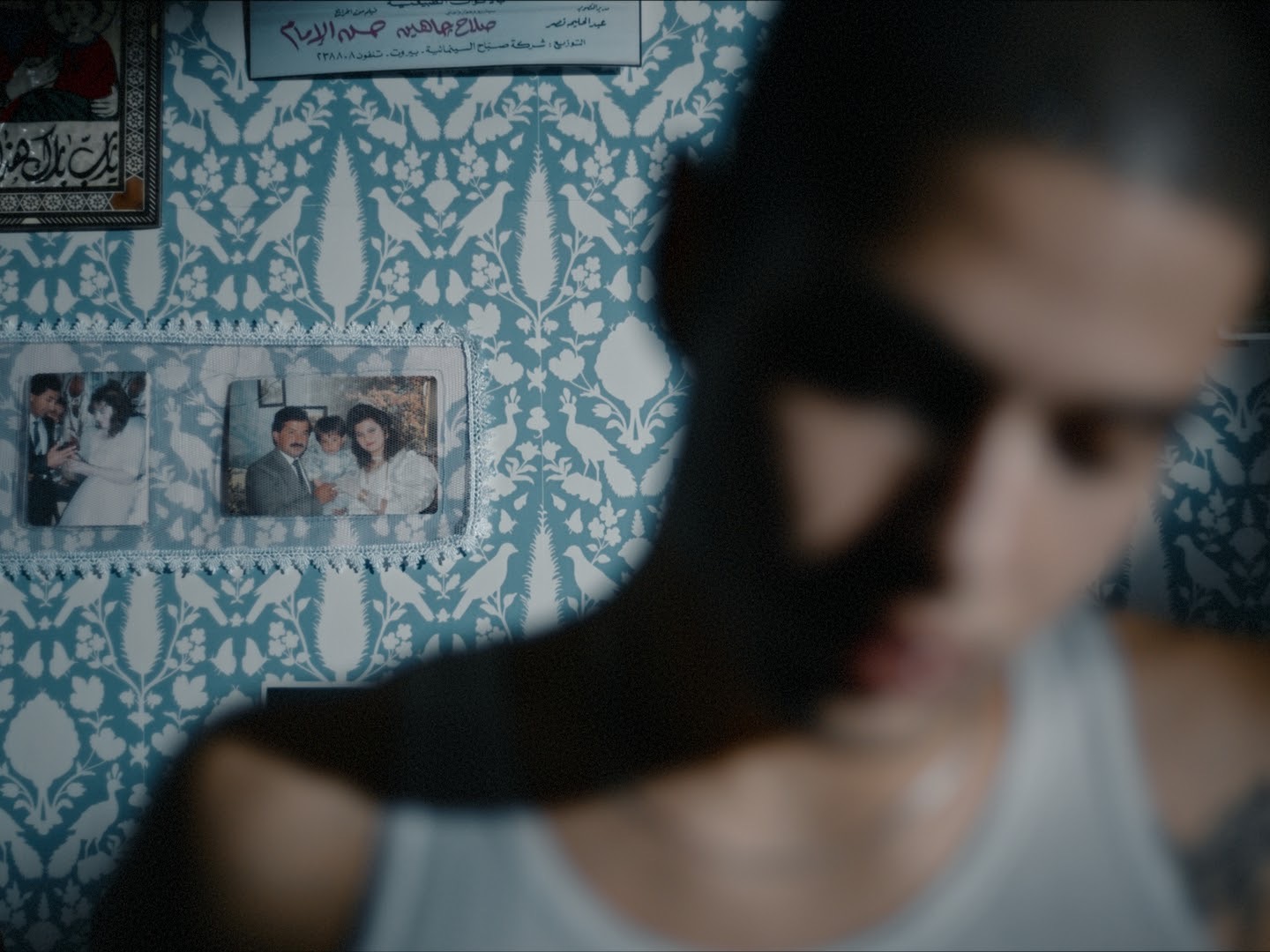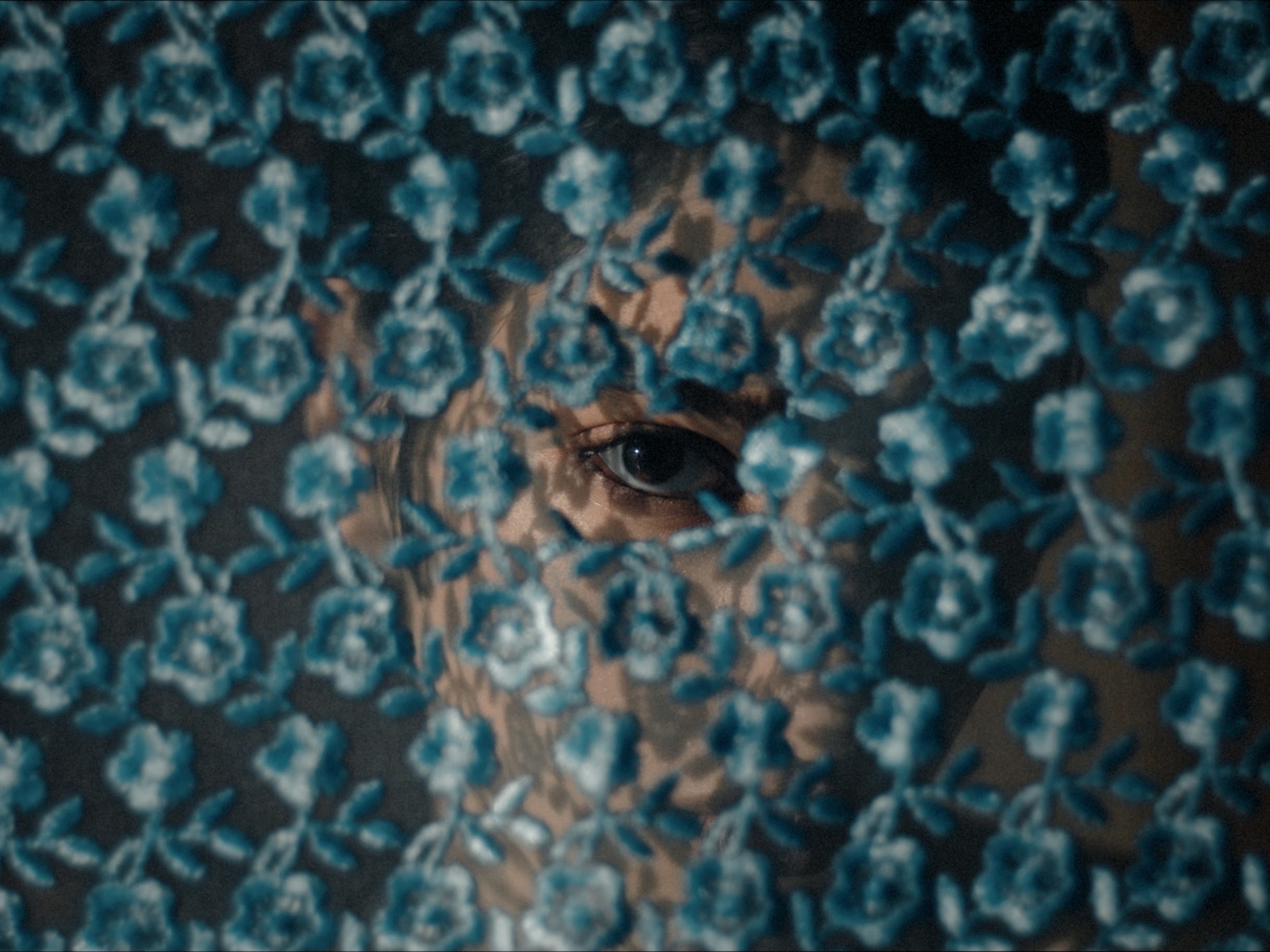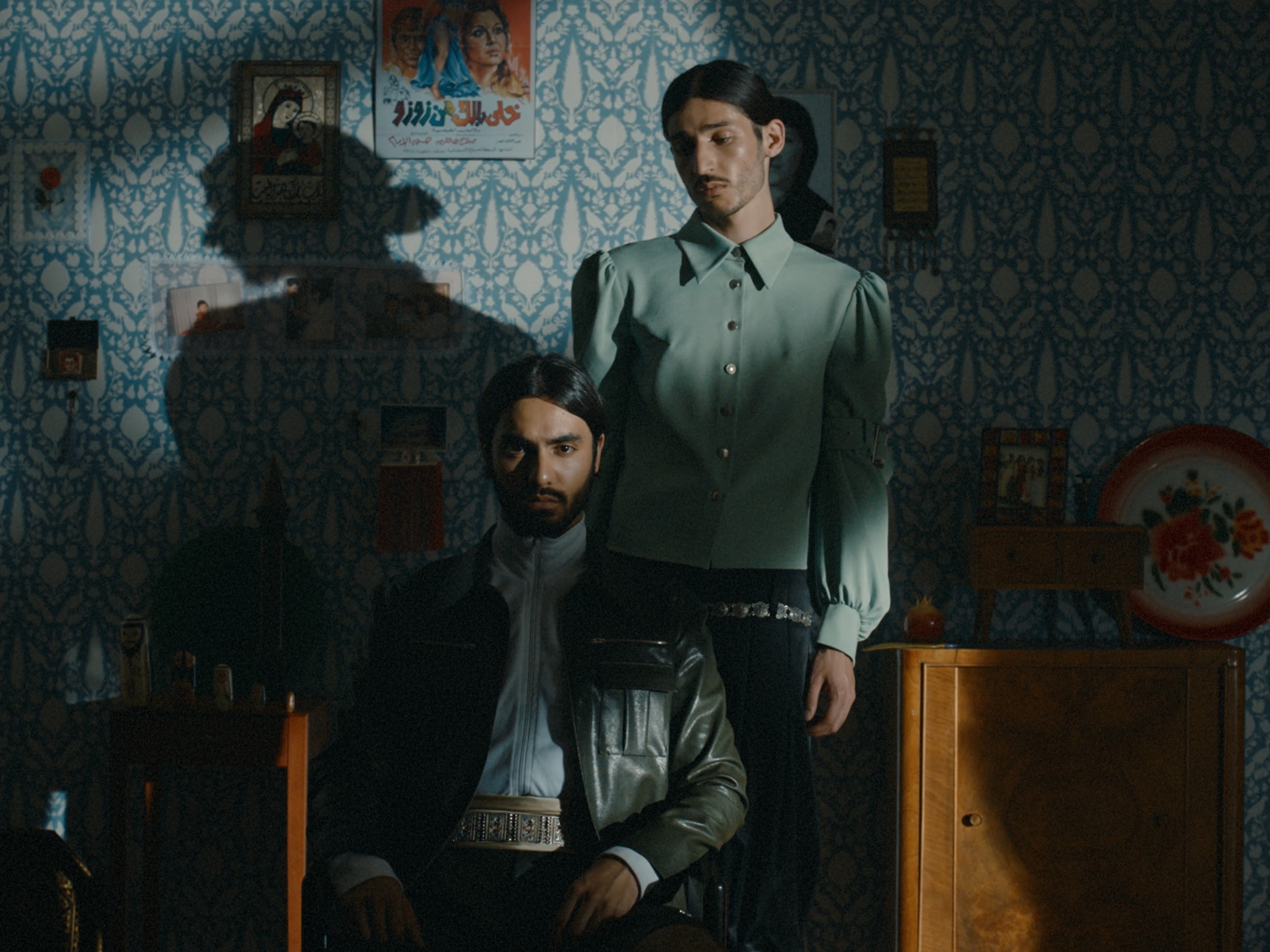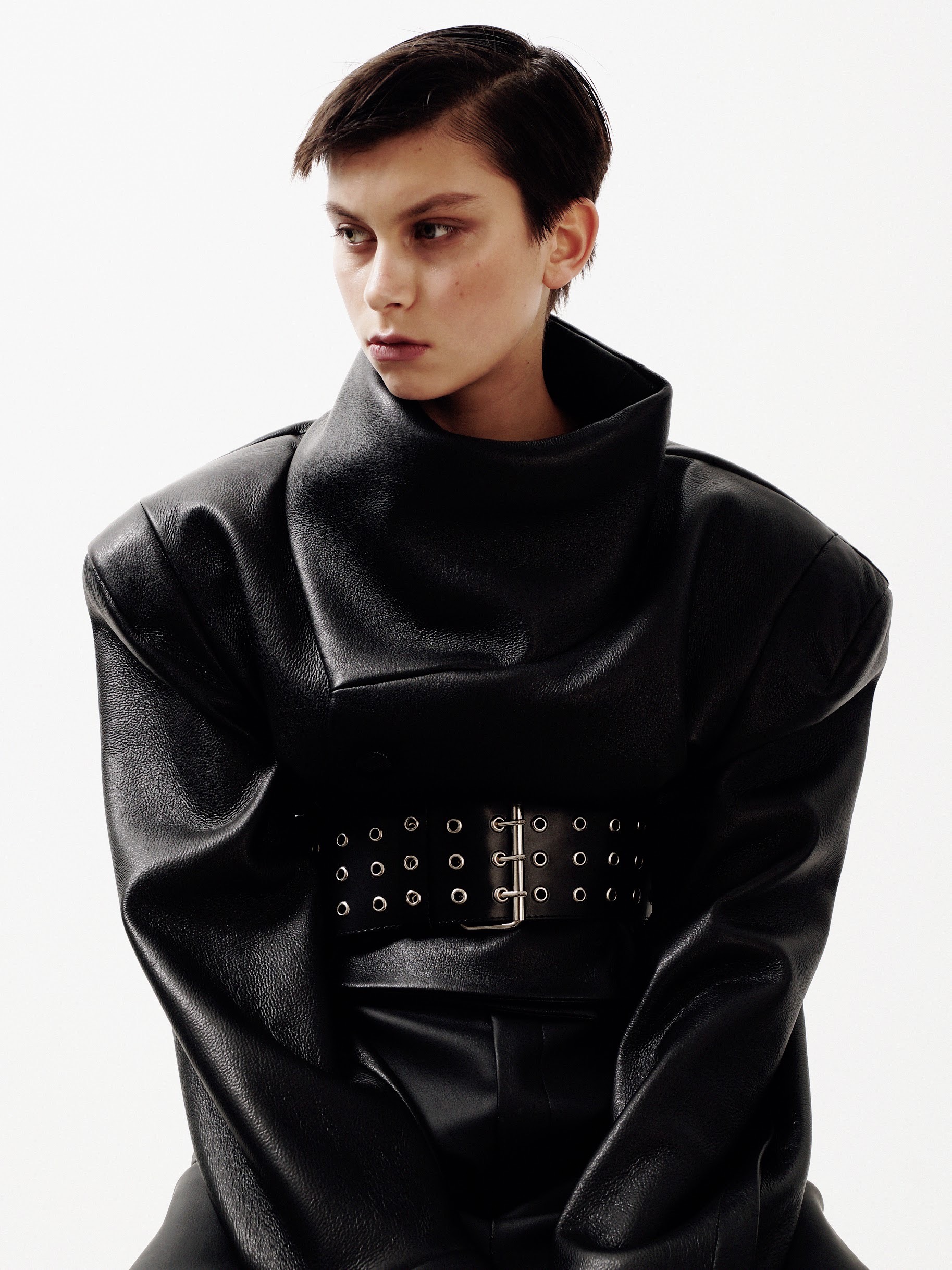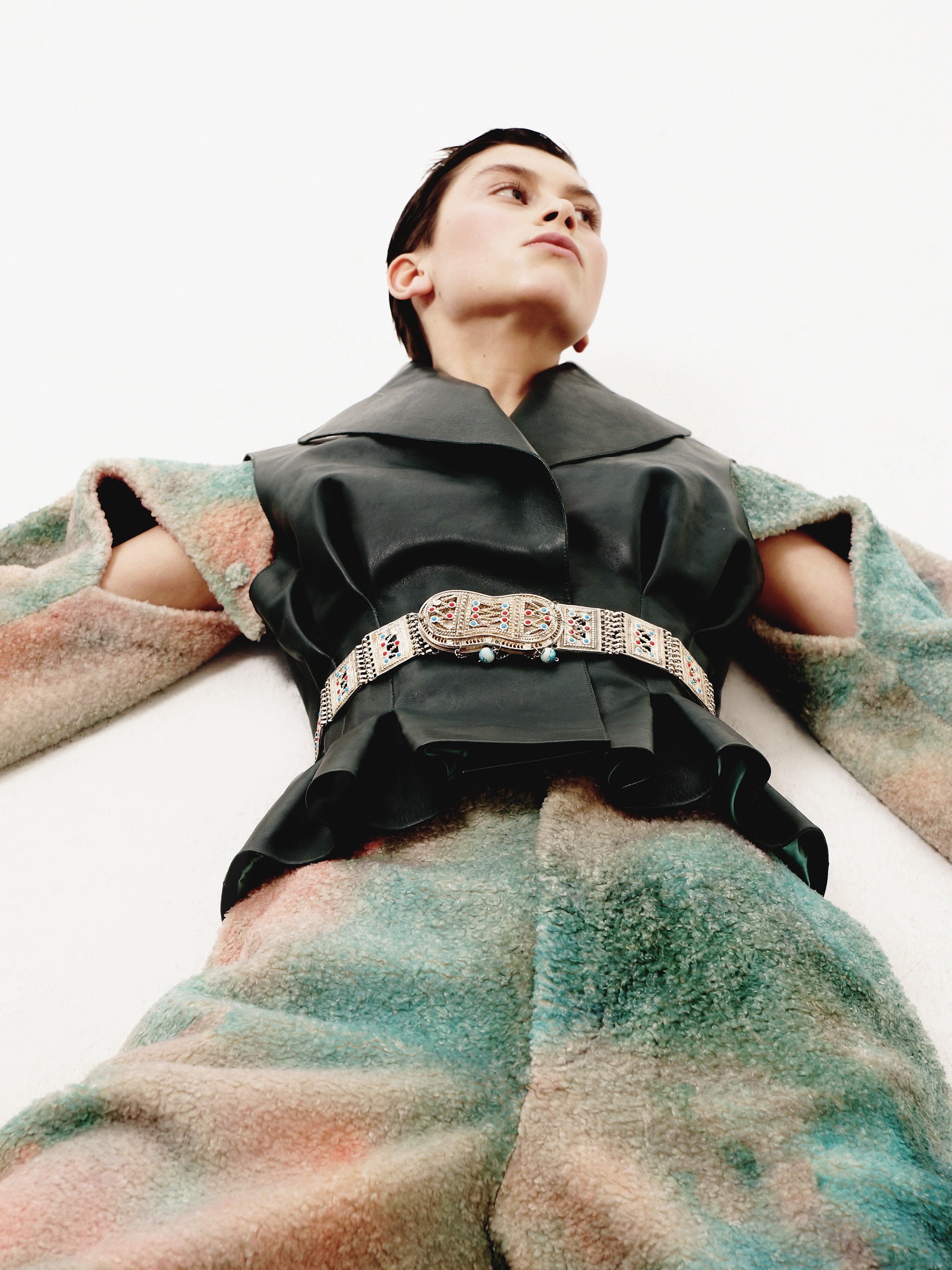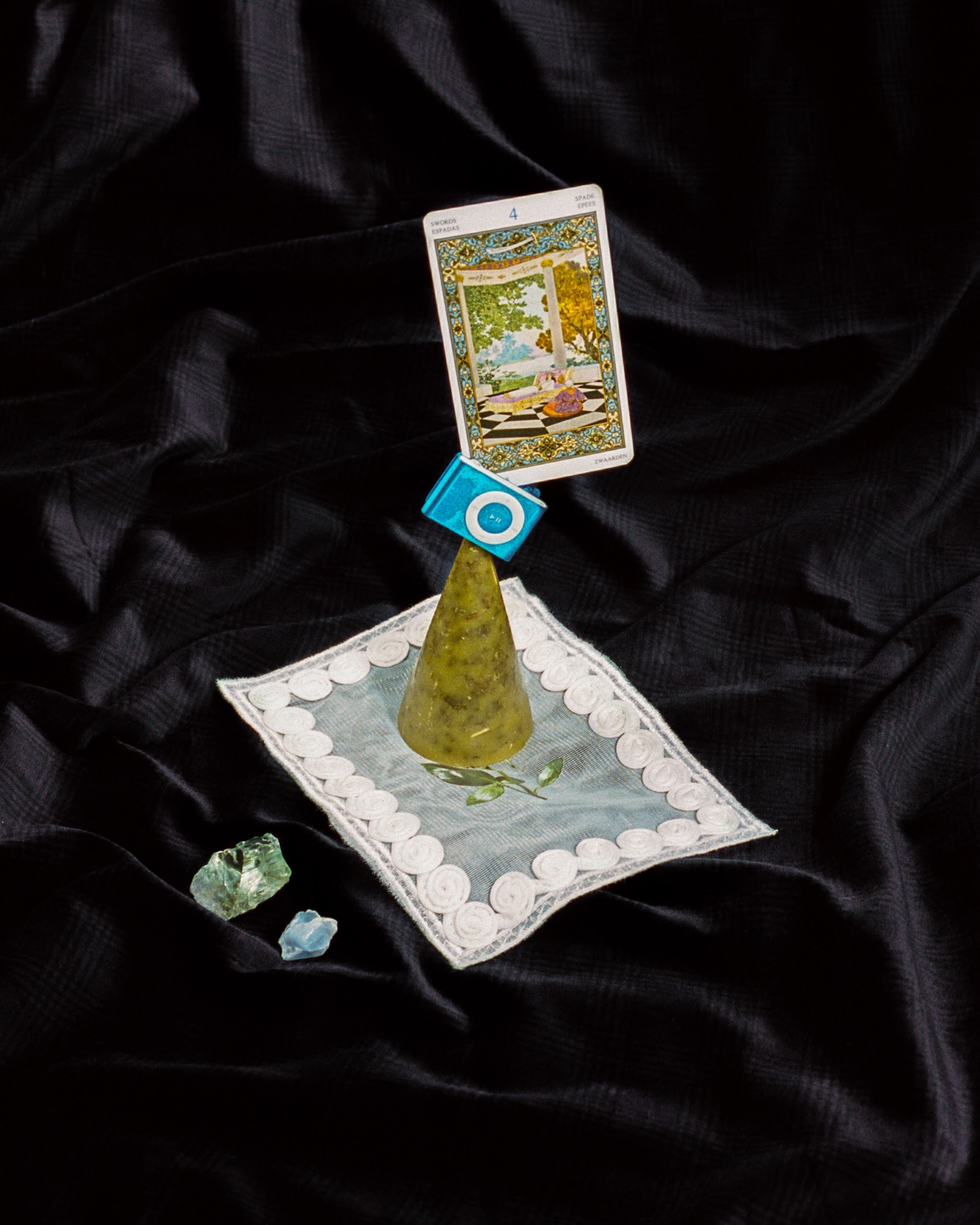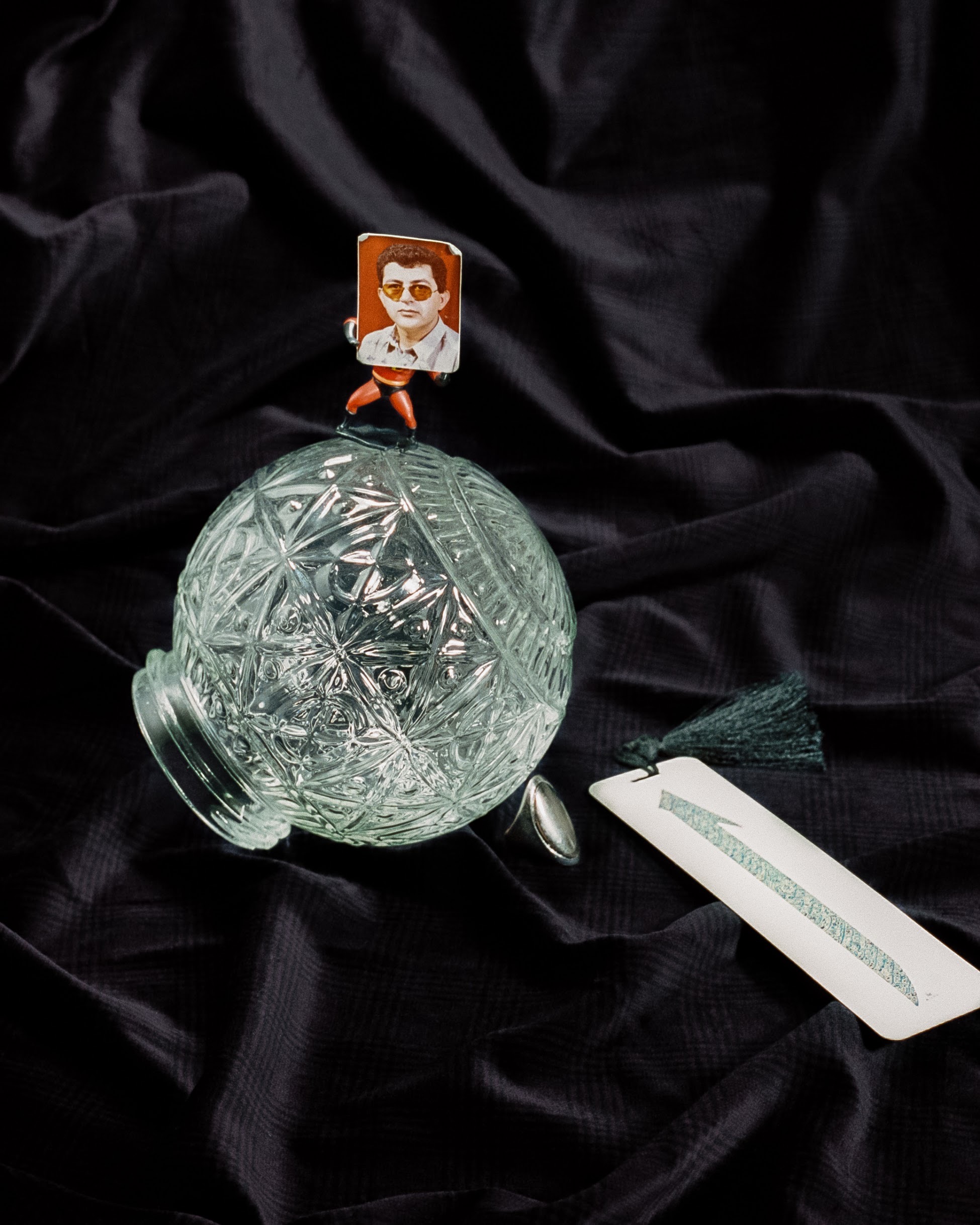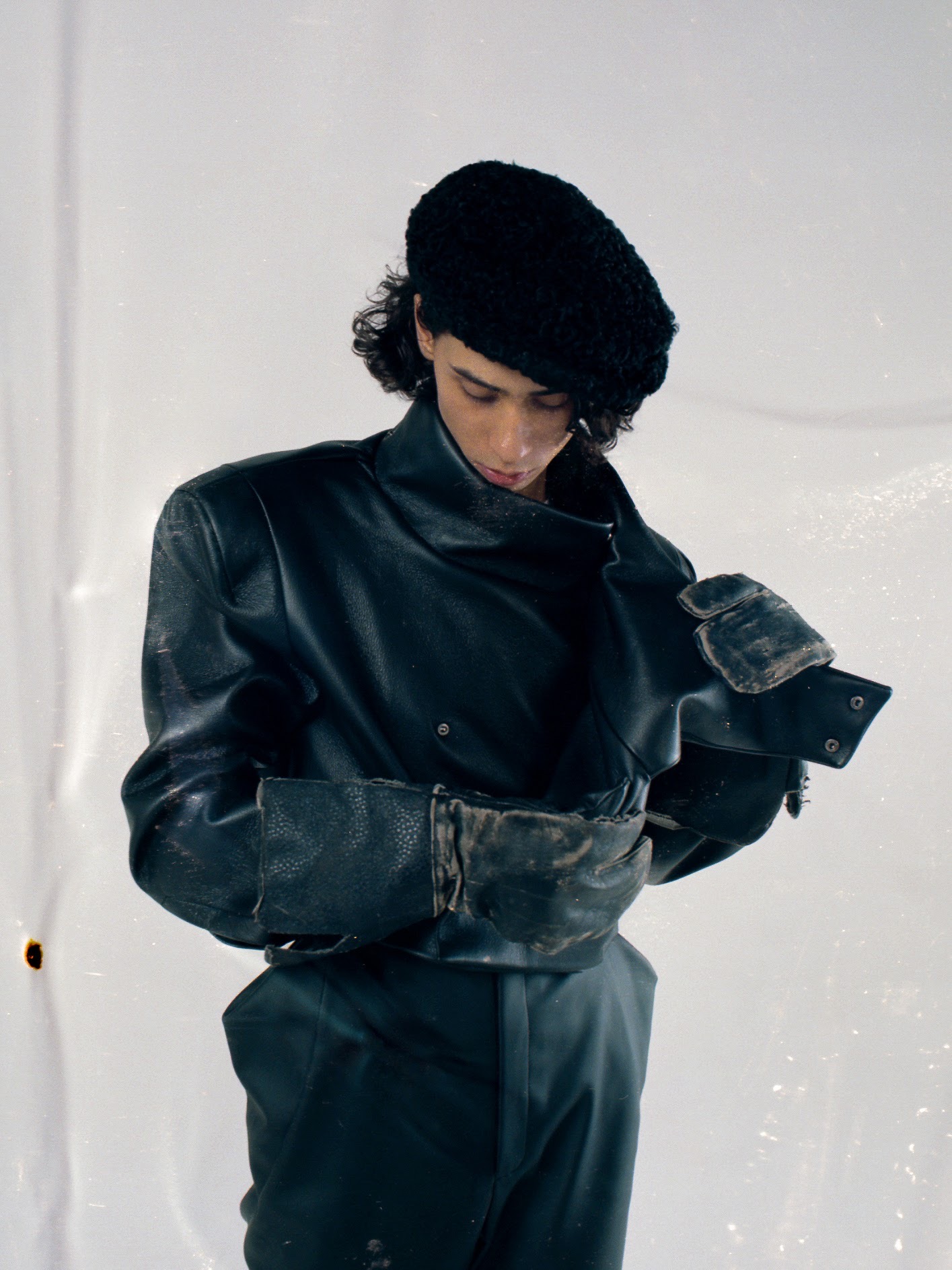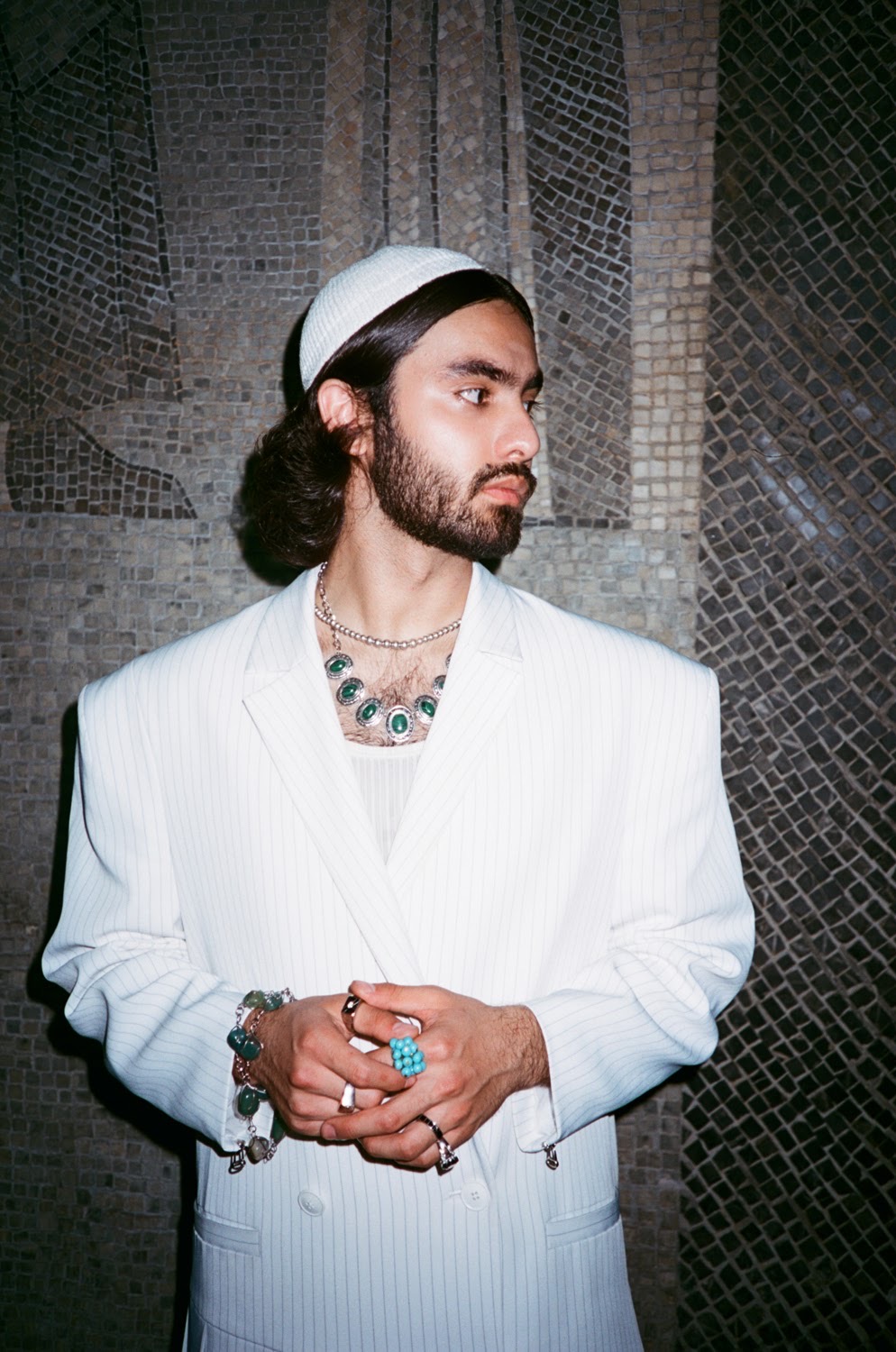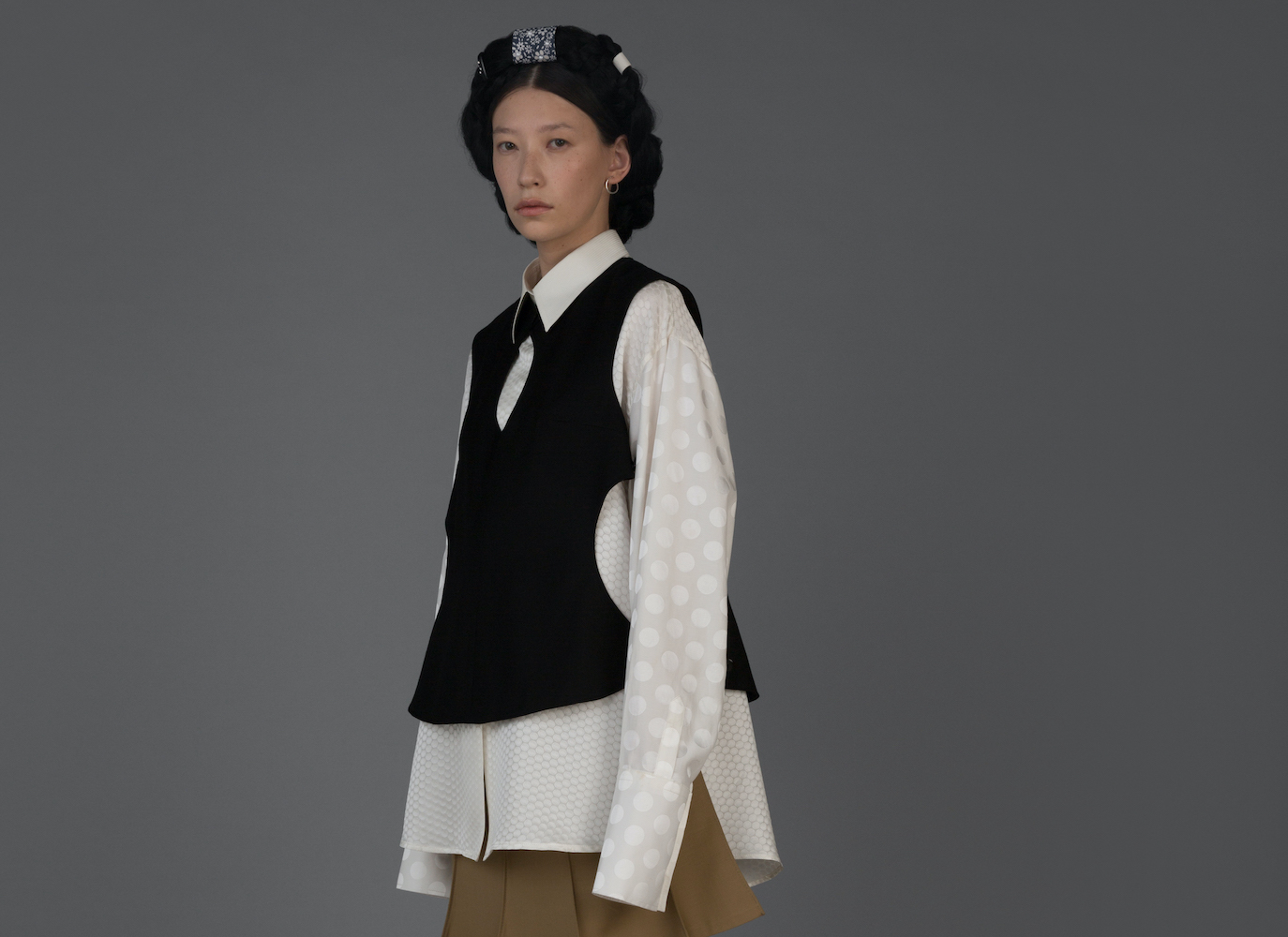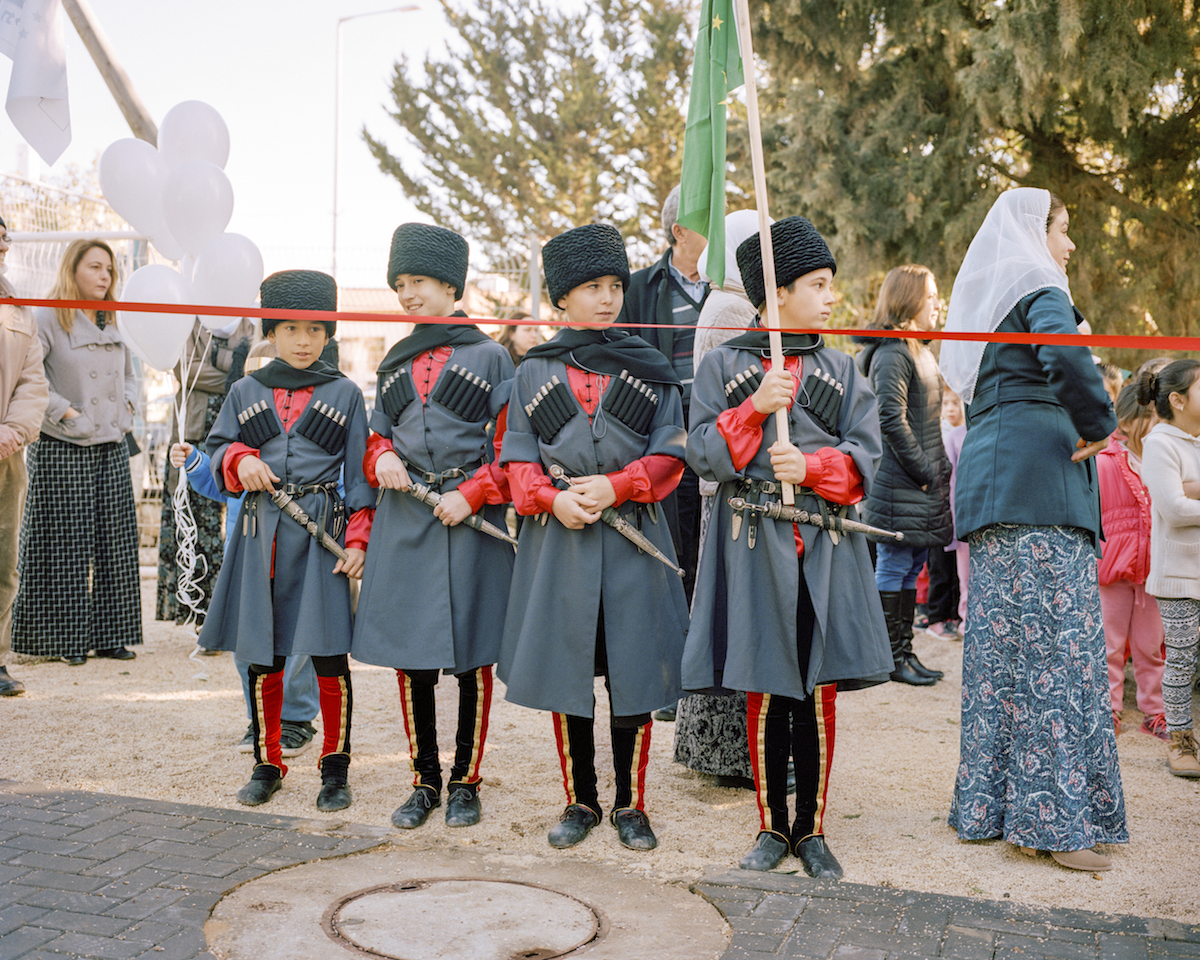Finding home with Russian-Kurdish fashion brand Vertigo
From Persian poetry to Iranian new wave cinema, Russian-Kurdish fashion designer Lorin Mai offers a tapestry of influences and colour in her label Vertigo.
Two young men are sitting in a room: quiet, still, as if posing for a portrait. Behind them, wallpaper patterned with white and blue flowers acts as a backdrop for a collection of framed black-and-white family photos. The camera focuses on the pair for a moment — their black leather jackets, a blouse the colour of muted ocean waves — before jumping to grainy VHS footage. We see snow-capped mountains, blue skies, children in matching jumpers, and a family by the sea.
The scene is part of Pastoral, a new short film from Moscow-based fashion label Vertigo. It seeks to capture the work of brand designer and founder Lorin Mai: a poetic blend of personal history and fashion design.
Lorin Mai is Russian-Kurdish, with family roots from Syria. Pastoral gives an insight into her work, which often sees garments from her own family photos transformed into high-couture pieces for her latest collection. Her aim is not to recreate the garments as direct copies, but to create a visual world that will resonate with other people from immigrant or diaspora backgrounds.
“Vertigo is a return to my roots and identity. It started from time spent studying my family archives, which opened a way for me to rediscover my culture and Kurdish history,” she says. “Studying the structure of Persian poetry was a part of my design process. For me, design is a way of thinking.”
Mai launched Vertigo in 2019, but the label’s universe reaches beyond just clothes. The brand’s summer 2021/21 lookbook, dedicated to Mai’s latest collection, Kîme Ez? (“Who am I?”), incorporates still-lifes featuring various trinkets: tarot cards, jewellery, small photographs. The images are designed to evoke the “feeling of home through simple small things. Insignificant objects suddenly symbolise the previous existence”.
“Kîme Ez? is like a parable about small joys of life: the images and garments that merge into an ode to one’s home and my fascination with the Kurdish people, especially the Jin-Jiyan-Azadi, a group of female freedom fighters” says Mai. The magic of trivial objects, the symbolism of the Kurdish religion, Yazidism, and Iranian new wave cinema become an allegory of my values, my deep attention to human stories.”
Delving into her heritage in this way often sees Mai start studying long before developing a collection, looking into areas like history, religion, anthropology, art, music, poetry, and film.
“For me, clothing is a resource for cross-cultural research which connects human experience, history and society,” she says.
Kurdish culture in particular is a rich but often neglected field of study. Historically, the Kurdish people have lived in a region which straddles modern-day borders, including the areas now known as southeastern Turkey, northwestern Iran, northern Iraq, and northern Syria. Throughout history, the Kurdish people have also repeatedly faced prosecution and genocide.
Through her work, Mai hopes to create more representation for Kurdish culture. “Traditional Kurdish music, called dengbêj, is a big area of interest for me. It used to be the only way to pass on information about events or our ancestors during eras of political repression when the Kurdish language was forbidden,” she says. “The songs were also stories recounting recent events, Kurdish geography and history, lullabies and love songs.”
In this way, Vertigo is just the latest addition to a bold new wave of designers celebrating that diaspora heritage on the international scene: Wales Bonner, Paria Farzaneh, or Supriya Lele. But Mai often finds that it is difficult to increase her presence in the Russian fashion industry, where institutional support is scarce. The designer admits that funding is often her biggest challenge. “The brand in its current iteration is a result of circumstances,” she says. “It’s not always possible to focus on continuous work, and sometimes I have to say no to projects due to lack of funds. I also have to ignore the seasonal framework and release material when I have the resources,” she says.
Nonetheless, Mai is committed to developing Vertigo further, both in terms of materials and storytelling. “After 2 years of running the brand, I can finally start paying attention to sustainability. I have managed at last to get a weaving loom, thanks to friends, who gave it to me as a birthday present. Soon, I’ll be able to incorporate more handcrafting techniques, including the ones Kurdish people use to create textiles and talismans from natural materials,” the designer says. “I also have plans to travel to Syria, my father’s birthplace. I haven’t visited for 11 years – [but I want] to understand how to continue this story.”

